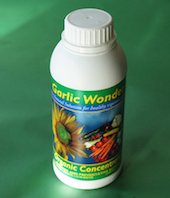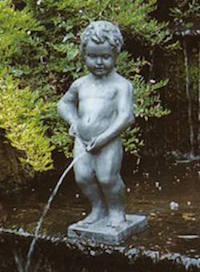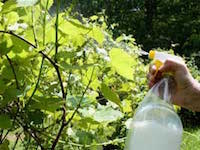Home made potions….
With Horticulturist Gareth Austin
Gardeners are full of stories, like fisherman, and like fisherman many have no bases in fact. This applies to many home-made hotions and potions that gardeners use/recommend. However there are many ‘home made’ potions that show real results in the garden….here’s a few of my favourite, with some basics on how they work…
Washing up Liquid
Soapy water is a really effective control for greenfly, aphids and other small insects. These work on contact – so they have to come in direct contact with the wee soft skinned bugs you’re trying to control. So repeat application every 3-5 days is needed to ensure you get a high% of the bugs, and there best applied early in the day or late in the evening. The soapy water is great in that the vast majority of beneficial insects (the bees etc) aren’t affected by it at all. There is a big downside however, in that you can damage many plants with too high a concentration of soap, anything about 2% concentration can be damaging to plants. Best tip to avoid damage is to wash your plants a few hours after you’ve applied the soapy water.
Garlic

Brilliant stuff. In your shed you must keep a bottle of garlic concentrate (you’ll pick this up in good garden centres likes Robert Kee’s, Aurivo Stores, O’Donnel Garden Centre, The Flower Pot etc etc) or make your own by crushing a garlic bulb into a pint of water. Garlic can be used for so much in the garden. One of the most common is to prevent root fly damage to carrots, to do this after every time to weed, thin, or bruise the foliage in any way give the crops a wee overspray of some of your garlic. This masks the smell of the carrots; it’s this smell that attracts the adult rootfly to lay her eggs into the carrots. Another great use of Garlic is for slug control, and this works great!. Every 2 weeks give your slug sensitive plants – such as Hostas a wee water with the garlic water and this repels slugs from these plants, now is the time to be starting with the Garlic. Garlic doesn’t kill, it just repels.
Rhubarb Leaves
Something which many gardeners throw away, there’s incorrect belief that these leaves are somehow dangerous to plants, but in fact they have a few great uses in the garden. Firstly as a compost activator – the big fleshy green leaves are a great source of fast acting nitrogen fertiliser, and will help to speed up the decomposition in a compost bin. Secondly as a slug repellent. The big rhubarb leaves contain high levels of Oxalic Acid, which is poisonous to us and many animals. If you boil up the rhubarb leaves you can make a great spray to deter caterpillars on your cabbages (and it’ll do Aphids too).
Milk
Makes a great fungicide, but you have to use full fat milk. I’ve used milk as a blackspot control on roses very effectively, and I’ve heard of other folks using it as a blight control on spuds. The milk works in two ways, the sugar content helps to give the plants a ‘pick up feed’ (we’ll cover this shortly) and the enzymes that it contains help to provide an antiseptic quality to the leaves of the plants. Milk works best as a preventative, so spray a 30% concentration of milk with water to susceptible plants, like the roses, or for mildew on courgettes, before any sign of disease. If the plant has some mildew or other disease then a spray of milk will help to prevent it spreading to the rest of the plant/neighbouring plants.
HorseTail Weed
Horsetail weed is an obnoxious weed, which is a nightmare to control. But it has a positive use in the garden, it makes a great fungicide for mildew and rust and for preventing damping off disease in seedlings. Just boil up a handful into a litre of water, and when cooled, bottle and then use this mixed 1 part to 5 parts water on the foliage and soil around the plants. HorsesTail Weed is high in silica, and this silica when applied to plants helps these plants to resist disease by increasing their light absorption skills, so in a way it’s a simple fertiliser.
Sugar
There are few more potent products in the house for garden health and wellbeing than Sugar. Plants Photosynthesise, converting sunlight into sugar every day of their lives, so what easier way to give plants a ‘pick up’ than to give them some sugar (remember your mum giving house plants Lemonade??). Sugar works wonders on the lawn too! Sugar is a very soft form of Nitrogen, and this promotes greening and development of foliage on plants. So if a plant is a bit poorly looking, give it some sugar, this will perk it up and encourage it to produce new foliage, and in turn this new leaves will allow the plant to photosynthesise and onwards and upwards.
Urine

Male urine can be useful in a few horticultural methods. Cat/Deer/fox repellent. The scent of male urine works well as an animal repellent, so if you’ve an issue with cats leaving presents in particular areas of the garden then send himself out to ‘irrigate’ the area. (or gather ‘supplies’ in an old milk carton and then apply a dash here or there around the garden. Urine is also a very effective fertiliser and compost activator, so again a dash now and again can be added to the compost pile, and a 20:1 mix with water makes a fast active fertiliser, high in Nitrogen and Phosphorus, which is great for lettuce and for the lawn.
TinFoil
Many insects navigate using light reflections and colour association. Tinfoil can really confuse many flying insects in the polytunnel, and in the case of chillies and peppers this can really improve the flavour and heat intensity of the fruit. Layer soil tinfoil on the soil between your plants and the extra light bouncing back onto the plants will do the trick. This layer of tinfoil will also confuse flying pests as they won’t know what way is ‘up’ so they’ll move onto other plants.
Music
Plants respond to music, and to being talked too. Stay with me….there’s science here…not just some random loony statement! Plants produce a hormone called ethylene when being rocked by wind, plants growing in a greenhouse or a Gillespie Polytunnel can lack this hormone as there’s not a contact breeze in the tunnel like there would be in the garden, so plants in the tunnel can get leggy and never develop as strong a root system as plants grown outside (or where a fan is running in the tunnel). Music, especially frequencies around 5000 Hz, have shown great results in plant growths in confined spaces. Talking to the plants can be brought into the same discussion as above, but also talking to the plants bring in some extra carbon dioxide, this gas when supplied to plants increases the rate of Photosynthesis. So play music and talk to your plants in the tunnel…anyone asks…tell them Gareth told you to!
There are many many more natural remedies advocated and discussed by many gardeners out there, with these and the ones above I’d also proceed with caution, especially when applying something to a product you’re planning on eating, or perhaps a plant which has sentimental value. So try a wee bit first, see the results, and then treat the rest of the plants. Someone once described this as the same method when getting your hair colours, when you get the patch tests done before you commit to the full colour.
Next Week….Selecting, planting and managing trees in the garden
Gareth Austin is resident Horticulturist with BBC Radio Foyle, a member of the Chartered Institute of Horticulturists and lectures in Horticulture with Donegal ETB. For more see www.garethaustin.com or join Gareth on Twitter @GardenerGareth







